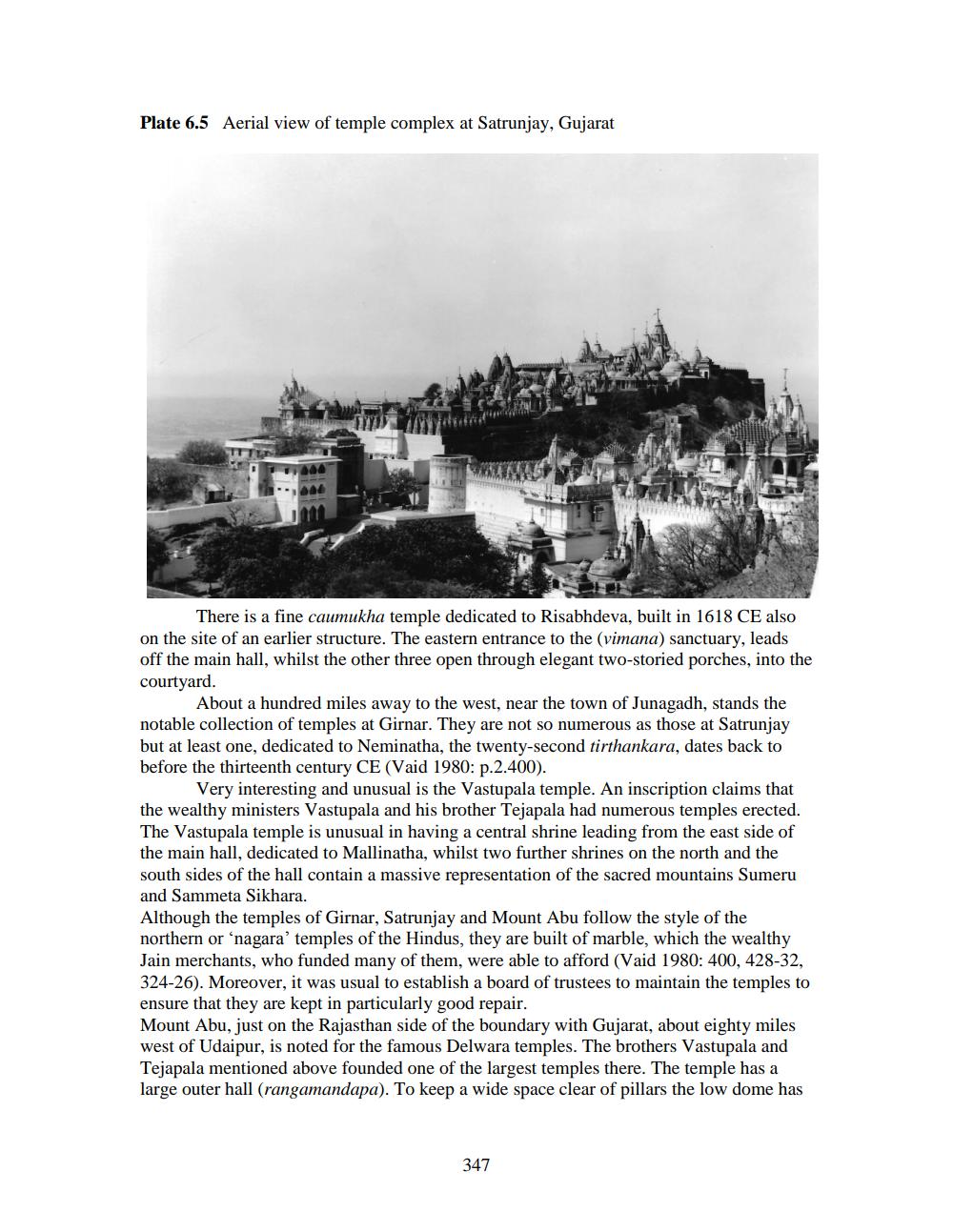________________
Plate 6.5 Aerial view of temple complex at Satrunjay, Gujarat
There is a fine caumukha temple dedicated to Risabhdeva, built in 1618 CE also on the site of an earlier structure. The eastern entrance to the (vimana) sanctuary, leads off the main hall, whilst the other three open through elegant two-storied porches, into the courtyard.
About a hundred miles away to the west, near the town of Junagadh, stands the notable collection of temples at Girnar. They are not so numerous as those at Satrunjay but at least one, dedicated to Neminatha, the twenty-second tirthankara, dates back to before the thirteenth century CE (Vaid 1980: p.2.400).
Very interesting and unusual is the Vastupala temple. An inscription claims that the wealthy ministers Vastupala and his brother Tejapala had numerous temples erected. The Vastupala temple is unusual in having a central shrine leading from the east side of the main hall, dedicated to Mallinatha, whilst two further shrines on the north and the south sides of the hall contain a massive representation of the sacred mountains Sumeru and Sammeta Sikhara. Although the temples of Girnar, Satrunjay and Mount Abu follow the style of the northern or 'nagara' temples of the Hindus, they are built of marble, which the wealthy Jain merchants, who funded many of them, were able to afford (Vaid 1980: 400, 428-32, 324-26). Moreover, it was usual to establish a board of trustees to maintain the temples to ensure that they are kept in particularly good repair. Mount Abu, just on the Rajasthan side of the boundary with Gujarat, about eighty miles west of Udaipur, is noted for the famous Delwara temples. The brothers Vastupala and Tejapala mentioned above founded one of the largest temples there. The temple has a large outer hall (rangamandapa). To keep a wide space clear of pillars the low dome has
347




